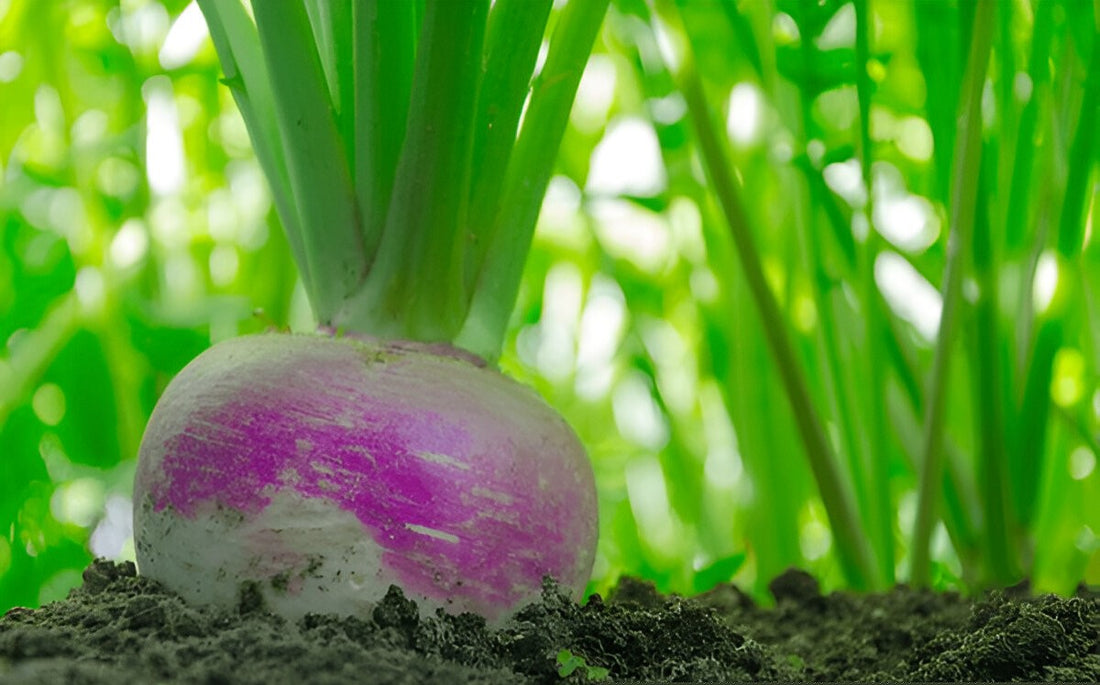
Grow Turnips in Pakistan: Moji Mall Guide
Share
Growing turnip (شلجم) at home is quick, simple, and rewarding. Turnips thrive during Pakistan’s cooler months, producing crisp roots and tender greens perfect for soups, curries, and salads. Here’s a simple guide to growing fresh shaljam successfully at home.
| Aspect | Details |
|---|---|
| Best Sowing Time | October to February |
| Ideal Temperature | 15°C to 22°C |
| Germination Time | 5–10 days |
| Transplant Time | Direct sowing (no transplanting needed) |
| Spacing | 3–4 inches between plants |
| Harvest Time | 45–60 days after sowing |
Step 1: Sow Seeds 🌱
When to Sow:
- Sow seeds from October to February, when temperatures are cool and pleasant.
- Ideal soil temperature for germination is 15°C to 22°C.
- Avoid sowing during hot months, as turnips prefer cooler weather.
How to Sow: Direct sow seeds 0.5 inch deep in loose, fertile, stone-free soil. Space seeds about 2–3 inches apart initially.
Germination Tips: Seeds usually germinate in 5–10 days. Keep the soil moist but not waterlogged during germination.
Step 2: Thin Seedlings 🌿
When to Thin: Once seedlings are 2–3 inches tall, thin them gently to leave 3–4 inches between each plant for healthy root development.
Why Thin: Proper spacing prevents overcrowding, allowing roots to grow round and firm.
Aftercare: Water lightly after thinning to help remaining plants settle in properly.
Step 3: Care for Plants 🌞💧
Sunlight Needs: Turnips grow best in full sun but tolerate light partial shade in warmer areas.
Watering: Water consistently 2–3 times a week, keeping soil moist. Dry soil can cause roots to become tough.
Feeding Schedule: Enrich soil with compost before sowing. Additional feeding is usually not necessary for fast-growing turnips.
Step 4: Protect Plants 🐛
Common Pests: Watch for aphids, flea beetles, and root maggots damaging leaves and roots.
Natural Protection: Spray neem oil every 10–12 days (1 teaspoon neem oil + 1 liter water + few drops soap), especially focusing on leaves and soil line.
Common Problems:
- Small Roots: Result from overcrowding or poor soil — thin seedlings and improve soil condition.
- Bitter Roots: Caused by high temperatures — plant during cool months.
- Holes in Leaves: Usually from flea beetles — use neem spray and mulch soil.
Step 5: Harvest Turnips 🌱
When to Harvest: Turnips are ready 45–60 days after sowing, when roots are about 2–3 inches wide, depending on the variety.
How to Harvest: Gently loosen the soil around the root and pull by hand, taking care not to damage the turnip.
Bonus Tip: Young, small turnips are sweeter and tenderer — harvest early for the best flavor.
FAQs
Can I grow turnips in pots?
Yes, use deep pots (at least 10–12 inches deep) with loose, fertile soil for good root formation.
How long does it take for turnips to grow?
Turnips typically mature in 45–60 days after sowing.
Why are my turnips growing long and thin?
This often happens if plants are overcrowded or soil is too hard. Thin seedlings and use soft soil.
Can I eat turnip leaves?
Yes, young turnip leaves are edible and very nutritious, great for stir-fries and soups.
How often should I water turnip plants?
Water 2–3 times a week, adjusting based on weather to maintain steady soil moisture.
Turnips are fast, forgiving crops ideal for home gardeners. With cool weather, loose soil, and steady care, you’ll soon enjoy fresh, flavorful shaljam — perfect for traditional Pakistani winter dishes.

